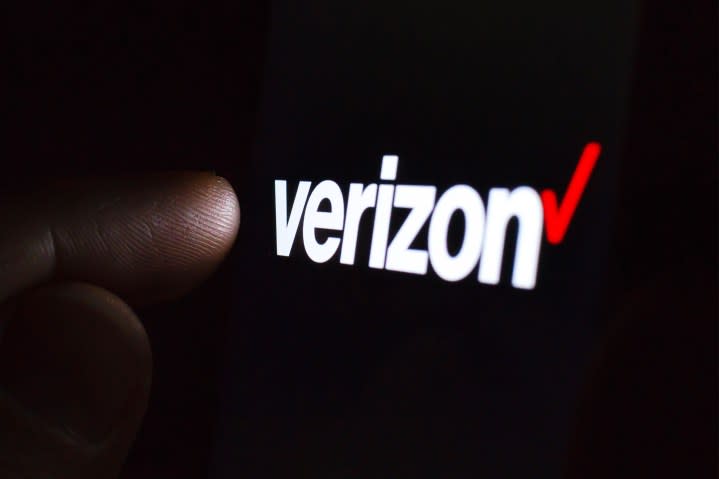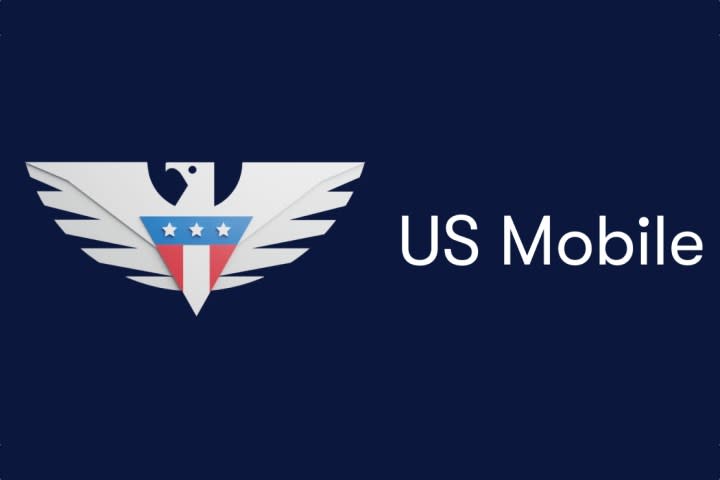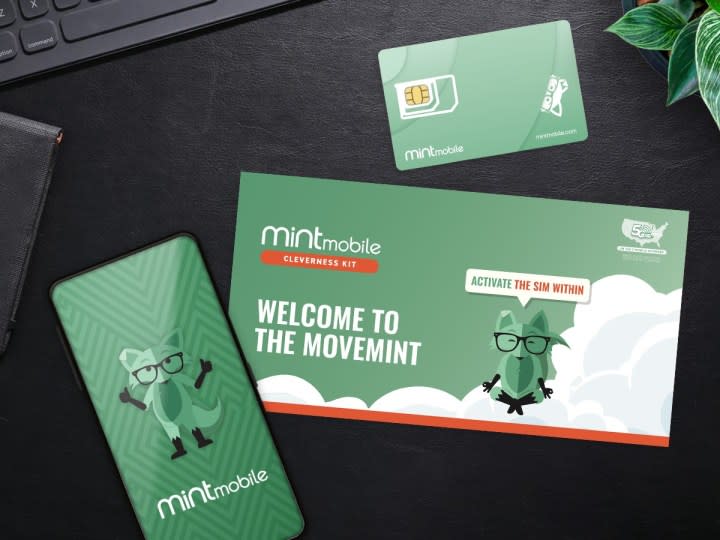5 carriers you should use instead of Verizon

For those who live in the right place, Verizon can be one of the fastest mobile providers available. While T-Mobile ranks as the fastest U.S. carrier overall, that’s based on average and median speeds across the country.
This means there are still many locations where Verizon handily beats T-Mobile in coverage and performance, especially in dense urban areas where the carrier’s extremely fast high-band mmWave 5G service is available.
However, like all of the big three carriers, Verizon isn’t cheap. While its plans offer quite a few nice perks, you’re paying for those, one way or another. That may add up to more than you need to spend if you just want reliable 5G coverage without the extra frills.
The good news is that you don’t need to pay a bundle to enjoy Verizon’s network — or even T-Mobile’s. There are dozens of Mobile Virtual Network Operators (MVNOs) available that use the same networks but offer more affordable plans. They offer fewer perks, but you’ll still get the same coverage and reliability with more than enough performance for most people’s needs.
Visible

In some ways, Visible is one of Verizon’s best-kept secrets. While you’ve undoubtedly seen the marketing, many folks don’t realize that it not only runs on Verizon’s network — it’s actually owned by the larger carrier.
That means you’re getting the best access to Verizon’s network that you can without signing up for Verizon directly. The plans start at $25 per month and give you the same reliable nationwide 5G coverage, plus unlimited data, talking, and texting.
The cheapest $25 plan is capped at Verizon’s standard 5G speeds, but if you have good coverage, those can easily reach 200Mbps. That’s more than enough for streaming 4K UHD video. However, those speeds may be slowed down (throttled) when the network is congested to make way for Verizon customers.
If you want access Verizon’s much faster 5G Ultra Wideband network (5G UW), you can opt for the $45 monthly plan, Visible Plus, which not only gets you higher C-band and mmWave speeds — over 1Gbps in some spots — but also guarantees that the first 50Gbps of data you use each month won’t be throttled. Visible Plus also gives you 2GB per day of full-speed data roaming in Canada and Mexico. Both plans include mobile hotspot access, but these are capped at 5Mpbs and 10Mpbs speeds for Visible and Visible Plus, respectively.
While those prices are already pretty great, you can save even more if you pay for an entire year in advance. The standard Visible plan is $295 for a whole year ($22.92/month), while the Visible Plus plan costs $395 if you pay for a year upfront, which works out to $32.92/month — or $145 in annual savings. There’s also a Connection Protection program to help those facing layoffs stay connected by providing credits of $25 per month to cover the cost of Visible’s standard plan. If you’re looking to upgrade your mobile phone, Visible offers a selection of phones that can be purchased or financed through Affirm.
US Mobile

Another popular MVNO that runs on Verizon’s network is US Mobile, which is one of the best ways to stay on Verizon’s network while spending as little as possible.
That’s especially true if you don’t need a lot of data. US Mobile’s entry-level Light plan starts at only $8 per month if you pay for a year in advance. This gives you unlimited text and talk but only 2GB per month of data. US Mobile enforces a hard cap on its data, meaning you’ll be cut off rather than throttled once you hit that limit. You won’t have data access until the end of your billing cycle unless you add more by paying for “top-ups” at $2 for each additional gigabyte.
For those who need more data or want to share with a family, US Mobile’s By the Gig plans start at $10/month for 2GB or $20/month for 10GB and go up from there. However, that data is shared with as many additional lines as you want to add for only $8 per month per line, regardless of the size of the data pool. So, while a 30GB plan is $50/month for one line, it’s only $58/month if you want to share that data between two people, or $66/month for three, and so on.
Unlimited plans, which throttle data rather than limiting it, start at $17.50/month for 10GB and go up to $32.50/month for 100GB. All plans provide access to Verizon’s 5G UW network, so you’ll get great speeds, plus different tiers of hotspot data allotments. If you sign up for at least three lines on the highest Unlimited Premium plan, US Mobile will also give you a free monthly credit of up to $15 for a chosen streaming service like Spotify, Apple Music, Netflix, Playstation Plus, and more.
In addition to Verizon’s network, US Mobile also operates on the T-Mobile network. You need to pick your preferred network when you sign up, but you’re not locked in as the carrier lets you “Teleport” to a different one. This lets you change over to T-Mobile if you’re traveling and end up somewhere with spotty Verizon coverage (or vice-versa). The first two transfers are free, after which you’ll pay $2 each time you switch unless you’re on the most expensive Unlimited Premium plan.
Mint Mobile

If you’re not married to the idea of staying on Verizon’s network, Mint Mobile is one of the most affordable unlimited data plans on the market. You’ll be running on T-Mobile’s 5G Ultra Capacity (5G UC) network, which means excellent coverage and speeds, with 40GB of premium data, and you can get started for as little as $15 per month.
Mint Mobile’s deep discounts are based on paying up front. In fact, the MVNO has no monthly plans. You’ll have to shell out for at least three months at a time. New customers pay $45 for those first three months, after which you can renew at $30/month by paying for either three or 12 months. There’s also a six-month plan, but it perplexingly has a higher monthly cost than the three-month one, so we’re not sure what the point is.
The “Unlimited” plan offers 40GB of data every month with maximum speeds of up to 320Mbps, after which data will be throttled. Lower-tier 5GB, 15GB, and 20GB plans offer similar terms for those who don’t want to pay as much, and you can get 5GB of data each month with no hard caps for $15/month.
This is a no-frills carrier, so there are no special perks. However, you do get mobile hotspot capability that’s capped at 10GB per month regardless of the plan you’re on, plus free calling to Canada and Mexico and free texting to over 190 countries.
There are also mix-and-match family plans, but they don’t offer any discounts, merely the ability to manage everything in one place and on a single bill. Mint’s rationale is that it’s already offering the deepest discounts available, so it doesn’t matter whether you sign up for one line or five.
Google Fi

If you’re a world traveler, Google Fi is one of the best prepaid wireless services you can get. Unlike most other carriers, which might let you roam in Canada and Mexico, Google will let you use your data nearly anywhere in the world at no additional cost.
You’ll need to be on its $65/month Unlimited Plus plan to take advantage of that, but it comes with enough other perks to make that a worthwhile choice. Not only can you use your unlimited data in over 200 countries and regions but you also get free Wi-Fi calling to stay in touch with friends and family back home, plus unlimited mobile hotspot data — even when roaming internationally — plus the 100GB Google One plan and six months of YouTube Premium thrown in.
Technically speaking, the “Unlimited” data works out to 50GB per month, after which you’ll be throttled, but that 50GB of high-speed data is available no matter where you are — there are no separate limits for roaming. You can also share your data with up to four tablets and an LTE-capable Google Pixel Watch or Samsung Galaxy Watch, and as with your phone, you’ll be able to use all those devices nearly anywhere you land.
There’s also a Simply Unlimited plan for those who don’t roam outside of North America, but it’s not nearly as much of a deal compared to what you can get from other MVNOs. You’ll pay $50 per month for 35GB of high-speed data that includes roaming in Canada and Mexico, but the mobile hotspot is capped at 5GB, and you can only share that data with your smartwatch.
Red Pocket Mobile

Red Pocket Mobile is an ideal choice for folks who aren’t sure which carrier’s network they want to live on — or simply want the flexibility to change. Unlike most MVNOs, Red Pocket runs on all three of the big carrier networks: AT&T, Verizon, and T-Mobile.
You’ll have to pick one to start, but Red Pocket makes it easy to switch using its CoverageGenius tool, although the terminology can be a bit confusing at first. Red Pocket calls Verizon’s network “CDMA” to distinguish it from AT&T and T-Mobile, which are “GSMA” and “GSMT,” respectively. However, as explained in a support article, that’s just a name and has nothing to do with needing an old CDMA-compatible phone. Any 4G or 5G phone that works on the Verizon network will work with Red Pocket Mobile.
As long as you’re using an eSIM, the process takes only a few minutes, and there are no additional fees or limits on how often you can do so. The only catch is that your prepaid balance won’t be transferred over when you switch to a new network, and you’ll have to pay for a new plan, so it’s best to wait until you’re at the end of a billing cycle.
Red Pocket’s plans start at $8/month for 1GB of high-speed data if you pay annually or $30/month for “unlimited” data (30GB). However, there are no hard caps on any plan, regardless of which carrier’s network you’re using — you’ll just be throttled to somewhere under 5Mbps if you go over.
As a discount carrier, there aren’t too many other perks here, but Red Pocket is unique in its offer of unlimited free international calling to as many as 80 or more countries, depending on which plan you’re on. There’s basic mobile hotspot access, although support varies depending on which carrier’s network you’re using.


